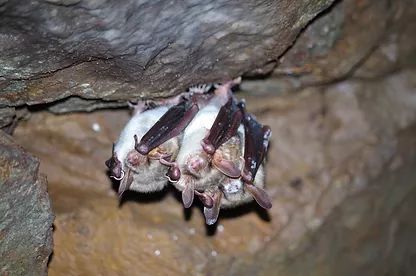A recent study analysing over 5,000 samples from Europe, Asia, and North America has revealed a surprising finding: white-nose disease in bats is caused not by one, but two distinct fungal species. This disease has already killed millions of bats in North America, with annual mortality rates reaching up to 90% in affected colonies.
Published in Nature, the study was led by Dr Nicola Fischer as part of her PhD work at the University of Greifswald and the University of Montpellier (Prof. Dr. Sébastien Puechmaille). Collaborating with an international team of researchers and more than 360 volunteer bat conservationists, also members of the German Bat Observatory, the project uncovered a second fungal species capable of causing the disease – and one that may pose an even greater threat should it spread to North America.
Significantly, genetic analysis traced the origin of the North American outbreak to the Podillia region in Ukraine – home to some of the world’s largest cave systems and a popular destination for international cavers. It is likely that the pathogen was unintentionally transported to a cave in New York State, where white-nose disease was first detected in 2006.
These findings underscore the urgent need for stricter biosafety practices in caving and cave research. “All gear must be thoroughly cleaned and disinfected before and after use,” stresses Dr Sébastien Puechmaille, co-author of the study. “A single introduction event can have devastating consequences.”
The German Bat Observatory strongly calls on cave visitors and researchers alike to act responsibly when entering sensitive habitats.
Study details:
Nicola M. Fischer, N. M., Dumville, I., Nabholz, B., Zhelyazkova, V., Stecker, R.-M., Blomberg, A. S., Dool, S. E., Fritze, M., Tilak, M.-K., Bashta, A.-T., Chenal, C., Fiston-Lavier, A. S., Puechmaille, S. J. (2025): Two distinct host-specialized fungal species cause white-nose disease in bats. Nature, https://doi.org/10.1038/s41586-025-09060-5

